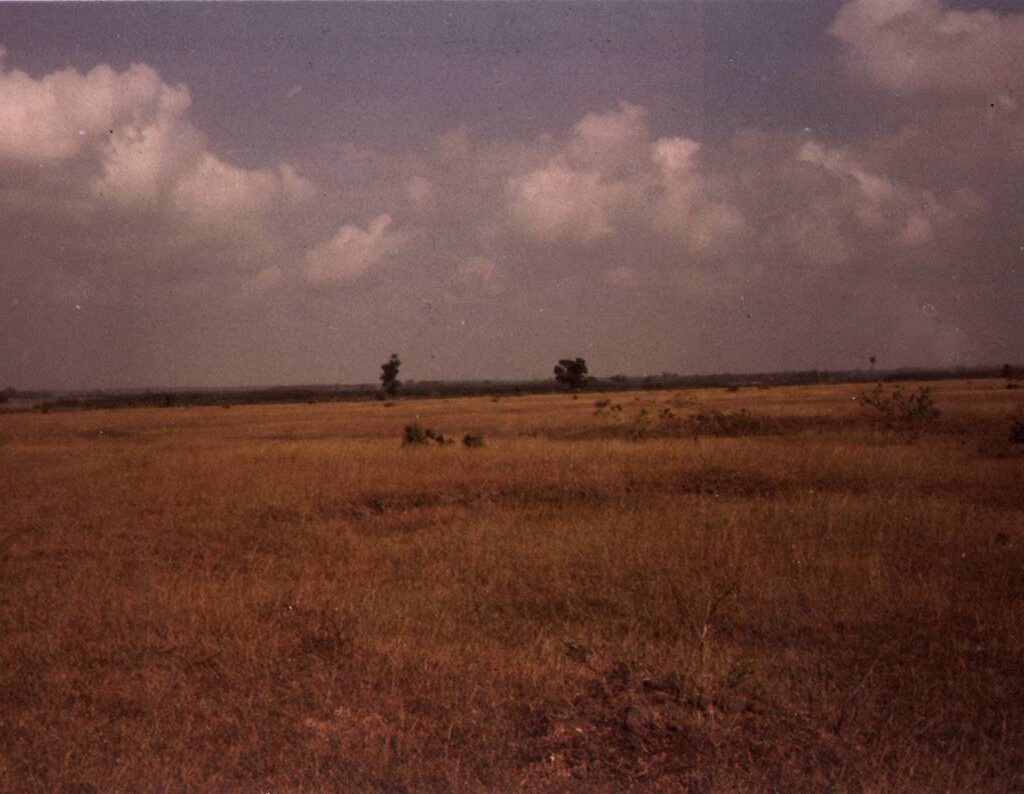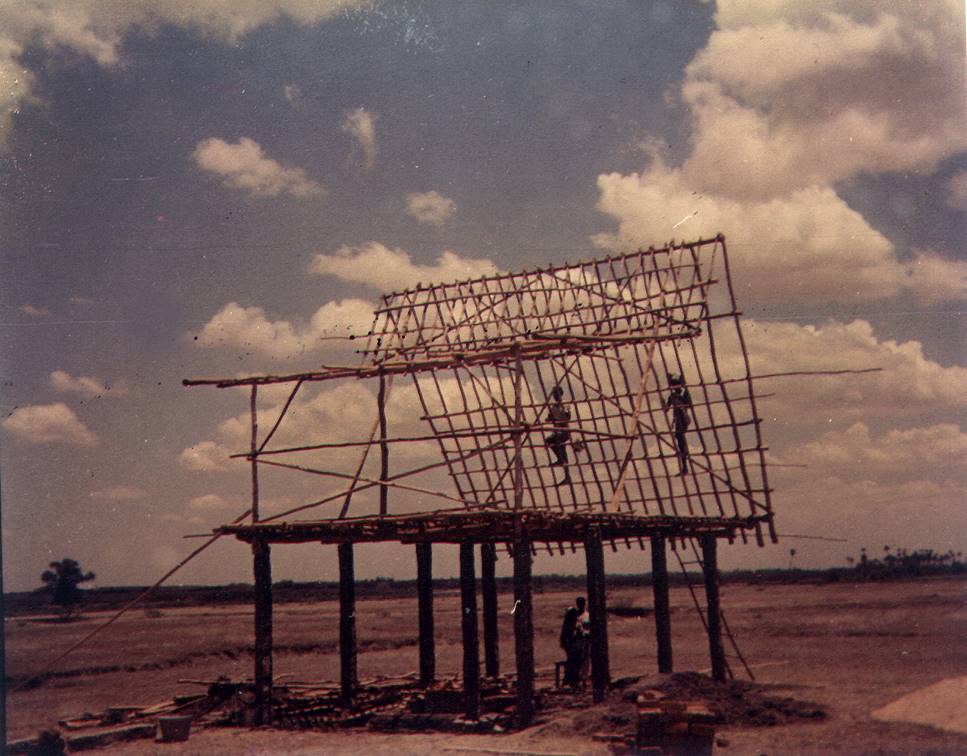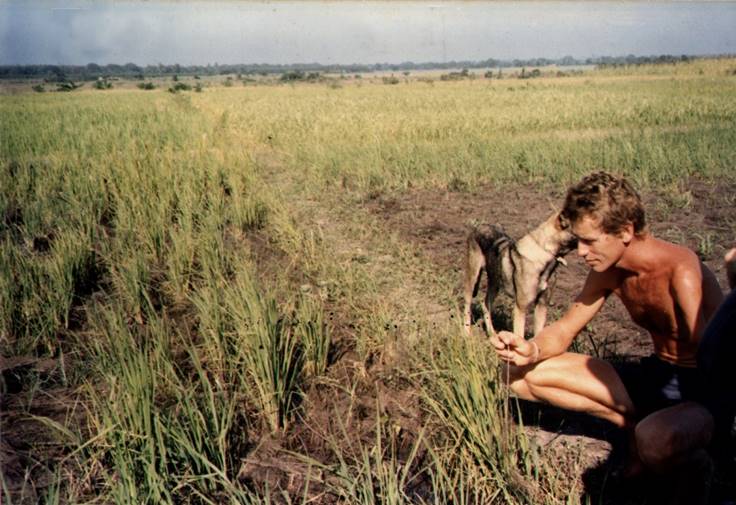In the beginning there was an almost barren piece of land







In the beginning there was an almost barren piece of land. Annapurna was sort of a joining point for villagers herding their animals. There are four villages around us; all of them about 2kms away. The 100 odd acres were there to be enjoyed by all. The vegetation then is not comparable to what it is now; except for the roadside land, it was totally barren: no trees, and little grass or weeds. Severe erosion was cutting into the land. The land had been over-grazed for a long time and stripped of anything of value. One has to understand that a plot of land in India becomes degraded when it is abandoned.
I came to Auroville in 1983. Before that I had worked for 6 months as a volunteer with an NGO organic farming project in Midnapure near Kolkata. I got into contact with the organization because of some work I did in Holland. I had a horticultural background and joined them to train local villagers in organic vegetable cultivation. At the end of my stay they referred me to the Sri Aurobindo Ashram in Pondicherry to visit some of their farms. After arriving in Pondicherry I quickly realized that the Ashram atmosphere was not really for me, I needed more space and worldly challenges.
One day I cycled out to Auroville and felt deeply touched. I ended up in Maya’s Tea Shop in Aspiration (one of the early Auroville settlements) and in a conversation with some Aurovilians I learned that people were needed for Kottakarai farm (a 60 acre farm in the North West of Auroville). The work and people clicked with me and that was it for over 3 years. Auroville had about 400 inhabitants at that time, most people lived in huts, motor cycles were few as well as telephone connections.
After some community struggles and a severe illness, I decided to change my work area at the end of 1986. We were planning to go to Annapurna with three people but one by one they abandoned the idea and so I was left on my own. Annapurna is situated about 10km from the centre of Auroville and one has to go through rural India whenever one wants to connect to the township. With limited modes of transport, no communication and no infrastructure on the land it was for most people not really what they wanted. At that point in time it was exactly what I needed.
After connecting myself somewhat to the land, Land Service, the Auroville group who took care of all un-stewarded land, asked me to take over the management of the 135 acres of land at the end of 1986. Annapurna was part of the Sri Aurobindo Ashram, like the whole of Auroville when it was founded. After an unhappy struggle between Auroville and the Sri Aurobindo Society (S.A.S) Annapurna’s land became part of Auroville in the beginning of the eighties.
The farm’s soil is different from Auroville’s soil. In Annapurna we have black cotton soil which is a heavy black clay, while in the township it is mostly red laterite, loam and light yellow clay. Black cotton soil has good potential for agriculture but is not an easy soil to cultivate, so there was a lot of learning to do.
In the beginning I lived in a hut
To start establishing the farm in 1986 was a real personal restart. I had been very ill due to hepatitis and not everyone was sure that I should be doing it just on my own.
In the beginning I cycled my way from Auroville, about 10 km. But then I built a hut, 50 meters away from the main road. The water came from a nearby open well. On the other side of the road was a granite crusher which used to work mostly at night since during that time the electricity was more dependable and cheaper. Nowadays there is a petrol station.
The granite crusher was loud but I got used to that and it had its advantages too. One of the by-products was granite powder with little pieces of granite. We bought it for very little money, transported it with a bullock cart and started building the internal pathways with it. Without a stable top layer vehicles would get totally stuck in the muck when it was wet.
In those early days I did a lot of walking to develop a feeling for the future lay-out of the farm. I planned the farm main buildings in the centre of the approximately 2 km long plot and that is where the farm’s active hub is today.
Water is essential – we experimented with Biodynamics – Flow forms
We had experimented with rice in the beginning of the 1980s in Kottakarai Farm. Very early it was clear that grains would be a focus of Annapurna farm. In 1988 Bernard (an Aurovilian Belgian national) moved in. I had worked with Bernard in the early years in Kottakarai and he had been connected to Annapurna since many years. He took my hut at the road side and I built another dwelling in the centre of the farm land.
From the beginning water was one of our focus points. When Andre (an Aurovilian Holland national) joined in 1989, we built so-called flow forms made of concrete to energize the water by letting it run through meandering shells, which created vortexes. These ideas came from Rudolf Steiner’s biodynamic agriculture. They were wonderful ideas and theories but actually it was too early to implement these techniques I realized later. These are like fine tunings after the infrastructure is set up well.
From the very beginning we had cows, but the dairy only started to become productive in the mid-nineties. Brooks (an Aurovilian American national), who joined in 1995 started producing paneer and cheese spreads some years after that. As there was a high demand for these products, we were happy to be able to generate some financial resources.
It took a long time to reach the financial break-even point. It was and it is kind of magic, how money found its way to Annapurna. We received donations from institutions and from individuals; otherwise we would not have survived. There was never a financial certainty but we were never completely lost.
Annapurna has employed local people from day one. In those days labour was cheap and plenty was available. Alot has changed over time and finding skilled people is not that easy and is much more costly nowadays.
It was 1988 when we got our first tractor
I still remember our first tractor. It was in 1988 when we got a very old machine from another farm in Auroville. We had to fix it, but then it worked wonderfully. In the middle of the nineteen-nineties we received donations from Germany to buy a new one because at that time the old one was really becoming very unreliable. We still use that tractor. The development of the farm had phases of smooth progress, as well as some hiccups, and we had points where the evolution was leaping. However, I never had the feeling that the project got stuck. There were always people who offered their expertise and resources to help us to move on. Looking back, its quite a miraculous story.
So many things to learn…
I of course underwent changes in my being a farmer. In the beginning we were very idealistic, aiming for a 100% green operation. We had a windmill, solar energy, biogas and hoped for more. But reality was our teacher and we had to face the fact that our contribution to Auroville’s food requirement was quite limited, when going for 100% green energy and seasonal crops only. And what is the use of being totally green if Auroville has to purchase 90% of necessary food from the Pondicherry market. So we made compromises to increase production keeping in mind that the future should bring in as much as possible sustainable practices.
We also learned that one cannot do everything on a farm. It is good to specialize according to the soil, the faculties of the people available, market, and the situation as a whole. Times are changing, demands are changing, potentials are changing; we constantly have to find our place in Auroville’s reality and needs and it is this flexibility that we are primarily living. It keeps the farm alive and it keeps us alive. Staying in the flow, not fossilizing in thoughts and practices and at the same time staying connected to deeper values in life.